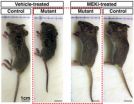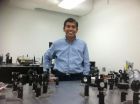(Press-News.org) The analysis was conducted using five editions of the EHRA White Book, which is produced by the European Heart Rhythm Association (EHRA), a registered branch of the European Society of Cardiology (ESC).
The EHRA White Book reports on the current status of arrhythmia treatments in the 54 ESC member countries and has been published every year since 2008. Data is primarily provided by the national cardiology societies and working groups of cardiac pacing and electrophysiology of each ESC country. Prospective data is collected on catheter ablation and on implantation of cardiovascular implantable electronic devices including implantable pulse generators (IPGs, also called pacemakers), implantable cardiac defibrillators (ICDs) and cardiac resynchronization therapy (CRT) devices.
For the first time this year an analysis of clinically meaningful trends in the use of catheter ablation procedures and cardiac implantable electronic devices has been conducted. "Statistics on the use of cardiac electronic devices and electrophysiological procedures in the ESC 54 countries" will be published in a dedicated supplement in EHRA's official journal, the European Journal of Pacing, Arrhythmias and Cardiac Electrophysiology (EP-Europace). It will be available online from 24 August at http://europace.oxfordjournals.org/.
The analysis includes all data from the first five editions of the EHRA White Book and reports changes over time in the 54 ESC member countries, which include countries in Europe and the Mediterranean. Comparisons are made within and between countries, and between the 54 ESC member countries and the 27 European Union (EU27) member countries. For each procedure, reasons are given for disparities between countries.
The analysis revealed healthcare inequalities in the treatment of different arrhythmic disorders across Europe and the 54 ESC countries, within established economies and within emerging economies, and growing gaps.
"The treatment gaps were not solely due to a country's economic status but were also the result of a lack of implanting centres, properly trained healthcare professionals and low referral rates," said EHRA president Professor Angelo Auricchio. "Just throwing money at the issue will not solve the problem. Training and adherence to guidelines are needed."
The analysis revealed that in 2011, across ESC member countries, an average of 604 IPGs were implanted per million inhabitants. The highest implantation rates were in Germany (1,313), Italy (1,034) and Iceland (1,006) and the lowest rates were in Azerbaijan (15), Morocco (39) and Georgia (84).
In ESC member countries the average number of ICD implantations per million inhabitants was 103 in 2011. The highest implantation rates were reported in Germany (326) and the Czech Republic (270). The lowest implantation rates were reported in Ukraine (1), Morocco (1) and Azerbaijan (2).
For CRT the average number of implants per million inhabitants in ESC member countries was 77 in 2011. The highest rates were in Italy (203), Germany (202) and Denmark (158), with the lowest rates in Morocco (1), Ukraine (1) and Azerbaijan (2). CRT implantation numbers were low in non-EU27 countries. Implant numbers were not correlated with average healthcare spending or GDP but were correlated with device reimbursement, the number of implant centres, and the lack of availability and poor implementation of local guidelines. The report said: "Focusing on changing local policies to achieve a more uniform approach to CRT, and bringing experience to these countries may increase implant numbers and decrease the persisting, significant geographical differences."
The average number of ablations performed per million inhabitants in ESC member countries was 251 in 2011. The highest rates were in Germany (614), Switzerland (612) and Belgium (534) and the lowest rates were in Morocco (3), Bosnia & Herzegovina (5) and Montenegro (11). Training appeared to be one factor associated with the level of ablation activity in each country, either because a minimum number of cases is needed to provide training or because the ability to provide training is often associated with both professional motivation and infrastructure to do more procedures.
Health expenditure per capita ranged between US$143 in Armenia and US$9,603 in Switzerland, a 67-fold difference. Reduced health expenditure was associated with lower use of interventional electrophysiological procedures.
"This is the first time we have analysed the trends in these therapies in different countries," said Professor Fernando Arribas, EHRA White Book coordinator. "The main finding of the five year analysis was the significant gradient in treatment from Western European countries to Eastern European and North African countries."
Professor Arribas added: "Awareness is the first step towards addressing a problem and our analysis provides an insight into where the gaps are and why they have occurred. Reducing the gap requires investment in hospitals where the procedures can be performed. It also requires investment in education so that more healthcare professionals become skilled in providing these therapies and so that physicians know how effective these therapies are and refer their patients."
He continued: "This document can be used not only for people involved in healthcare but also should be put on the table of politicians, healthcare providers and social groups."
The EHRA White Book has become a reference for comparing arrhythmia treatments between countries. The 532-page EHRA White Book 2012 was published in June 2012 and is available at www.escardio.org/EHRA. It is the first White Book to be published on the European Commission's (EC) "Health-EU" website and it will be included in the EC's Health in Europe: Information and Data Interface (HEIDI).
Professor Auricchio said: "The European Commission and World Health Organization are increasing their focus on non-communicable diseases including cardiovascular disease and are intrigued by the significant inequalities in treatment our analysis has shown with pacemakers, CRT, ICD and ablation therapies."
He added: "The gap between established and emerging economies in the use of these therapies is becoming larger and larger. We now have evidence to request actions from governmental agencies to reduce the gap because if nothing is done the gap will continue to increase."
EHRA is standardising the data collection to make future White Books and analyses even more robust. It is creating a large European database that will be used by the national societies and working groups in each country to enter data on implantations and catheter ablation. "If we want to reach our goal of homogenising patient care across Europe the first thing we need to do is improve the standardisation and quality of data collection," said Professor Karl Heinz Kuck, president-elect of EHRA.
He added: "We are going beyond just collecting numbers to try to really understand why some countries have low procedure rates. It's not only a budget issue: some countries lack physicians who can do the procedures and more training programmes are needed."
###
Notes to editor
The PDF of the EHRA White Book 2012 can be found here.
About the European Heart Rhythm Association
The European Heart Rhythm Association (EHRA) is a registered branch of the ESC. Its aim is to improve the quality of life of the European population by reducing the impact of cardiac arrhythmias and reducing sudden cardiac death.
About the European Heart Rhythm Association
The European Heart Rhythm Association (EHRA) is a registered branch of the ESC. Its aim is to improve the quality of life of the European population by reducing the impact of cardiac arrhythmias and reducing sudden cardiac death.
About the European Society of Cardiology www.escardio.org
The European Society of Cardiology (ESC) represents more than 75,000 cardiology professionals across Europe and the Mediterranean. Its mission is to reduce the burden of cardiovascular disease in Europe.
About ESC Congress 2012
The ESC Congress is currently the world's premier conference on the science, management and prevention of cardiovascular disease. ESC Congress 2012 takes place 25-29 August at the Messe München in Munich. The scientific programme is available here.
More information is available from the ESC Press Office at press@escardio.org.
ESC analysis reveals arrhythmia treatment gaps between Eastern and Western Europe
2012-08-29
ELSE PRESS RELEASES FROM THIS DATE:
TAVI restricted to very old or very sick patients
2012-08-29
The registry is part of the European Society of Cardiology (ESC) EURObservational Research Programme (EORP) of surveys and registries.
Today's presentation reveals current usage of the most modern TAVI valves and catheters in Europe, and compares indications, techniques and outcomes between different countries. "TAVI is a new technology which has been introduced in Europe but many question marks remain on which patients are most suitable," said Professor Di Mario. "We set up this registry because it was important to have a clear picture of clinical practice in Europe. ...
Added benefit of fampridine is not proven
2012-08-29
Fampridine (trade name Fampyra®) has been approved in Germany since July 2011 for adult patients suffering from a higher grade walking disability (grades 4 to 7 on the EDSS disability status scale), as a result of multiple sclerosis (MS). The German Institute for Quality and Efficiency in Health Care (IQWiG) has assessed the added benefit of the drug pursuant to the Act on the Reform of the Market for Medicinal Products (AMNOG). According to the findings, there is no proof of added benefit, as the manufacturer's dossier contains no evaluable study data for the comparison ...
Could a cancer drug potentially prevent learning disabilities in some kids?
2012-08-29
ANN ARBOR, Mich. — A drug originally developed to stop cancerous tumors may hold the potential to prevent abnormal brain cell growth and learning disabilities in some children, if they can be diagnosed early enough, a new animal study suggests.
The surprising finding sets the stage for more research on how anti-tumor medication might be used to protect the developing brains of young children with the genetic disease neurofibromatosis 1 -- and other diseases affecting the same cellular signaling pathway.
The findings, made in mice, are reported in the journal Cell ...
Belimumab for lupus erythematosus: Added benefit not proven
2012-08-29
Belimumab (trade name Benlysta ®) has been approved since July 2011 as an add-on therapy for adult patients with the autoimmune disease systemic lupus erythematosus (SLE). This monoclonal antibody is only considered as treatment when the disease is still active in spite of standard therapy. The German Institute for Quality and Efficiency in Health Care (IQWiG) has now examined the added benefit of this drug pursuant to the Act on the Reform of the Market for Medicinal Products (AMNOG).
According to the findings, there is no proof that belimumab provides added benefit ...
Mount Sinai researchers solve mystery surrounding the death of two sisters nearly 50 years ago
2012-08-29
Researchers at Mount Sinai School of Medicine have identified the genetic cause of a rare and fatal bone disease by studying frozen skin cells that were taken from a child with the condition almost fifty years ago. Their study, which details how the MT1-MMP gene leads to the disease known as Winchester syndrome, appears in the August 23, 2012 online edition of The American Journal of Human Genetics.
In 1969, Patricia Winchester, MD, a pediatric radiologist in New York City, was asked to diagnose two young sisters who were losing bone in their hands and feet, developing ...
Biomass characterization technology research highlighted in Industrial Biotechnology journal
2012-08-29
New Rochelle, NY, August 29, 2012--Biomass recalcitrance--the problem of how to break down complex plant-based cellulosic feedstock into sugars that can be fermented to produce sustainable biofuels and other renewable biobased products—can be overcome through improved methods of biomass characterization. IB IN-DEPTH, a collection of articles from leading research laboratories describing advanced tools and techniques for analyzing the chemistry, structure, and interaction of biomass components, is published in Industrial Biotechnology, a peer-reviewed journal from Mary Ann ...
Chimpanzees create social traditions
2012-08-29
A research collaboration between the Gonzaga University and the Max Planck Institute shows that the way in which chimpanzees groom each other depends on the community to which they belong. Specifically, it is the unique handclasp grooming behaviour that reveals this local difference.
The specific behaviour that the researchers focused on was the 'grooming handclasp', a behaviour where two chimpanzees clasp onto each other's arms, raise those arms up in the air, and groom each other with their free arm. This behaviour has only been observed in some chimpanzee populations. ...
Breakthrough in nanotechnology
2012-08-29
A University of Central Florida assistant professor has developed a new material using nanotechnology, which could help keep pilots and sensitive equipment safe from destructive lasers.
UCF Assistant Professor Jayan Thomas, in collaboration with Carnegie Mellon University Associate Professor Rongchao Jin chronicle their work in the July issue of the journal Nano Letters. (http://dx.doi.org/10.1021/nl301988v)
Thomas is working with gold nanoparticles and studying their properties when they are shrunk into a small size regime called nanoclusters. Nanoparticles are already ...
Soaking up the Sun
2012-08-29
Solar panels, like those commonly perched atop house roofs or in sun-drenched fields, quietly harvesting the sun's radiant energy, are one of the standard-bearers of the green energy movement. But could they be better – more efficient, durable and affordable? That's what engineers from Drexel University and The University of Pennsylvania are trying to find out, with the aid of a little nanotechnology and a lot of mathematical modeling.
A three-year grant from the National Science Foundation has set the team on a track to explore ways to make new photoelectric cells more ...
TacSat-4 participates in Navy fleet experiment Trident Warrior
2012-08-29
WASHINGTON –- U.S. Naval Research Laboratory's Tactical Satellite-4 successfully completes three weeks of intense testing, June 28, as part of the Navy's annual Trident Warrior Experiment 2012 (TW12). TacSat-4 is a Navy-led Joint mission that provides Ultra High Frequency (UHF) satellite communications (SATCOM).
Sponsored by Navy Warfare Development Command, Trident Warrior is an annual fleet experiment focused on gaining valuable insights to improve future capability investments. This year's agenda included at-sea experimentation of critical maritime initiatives, and ...



